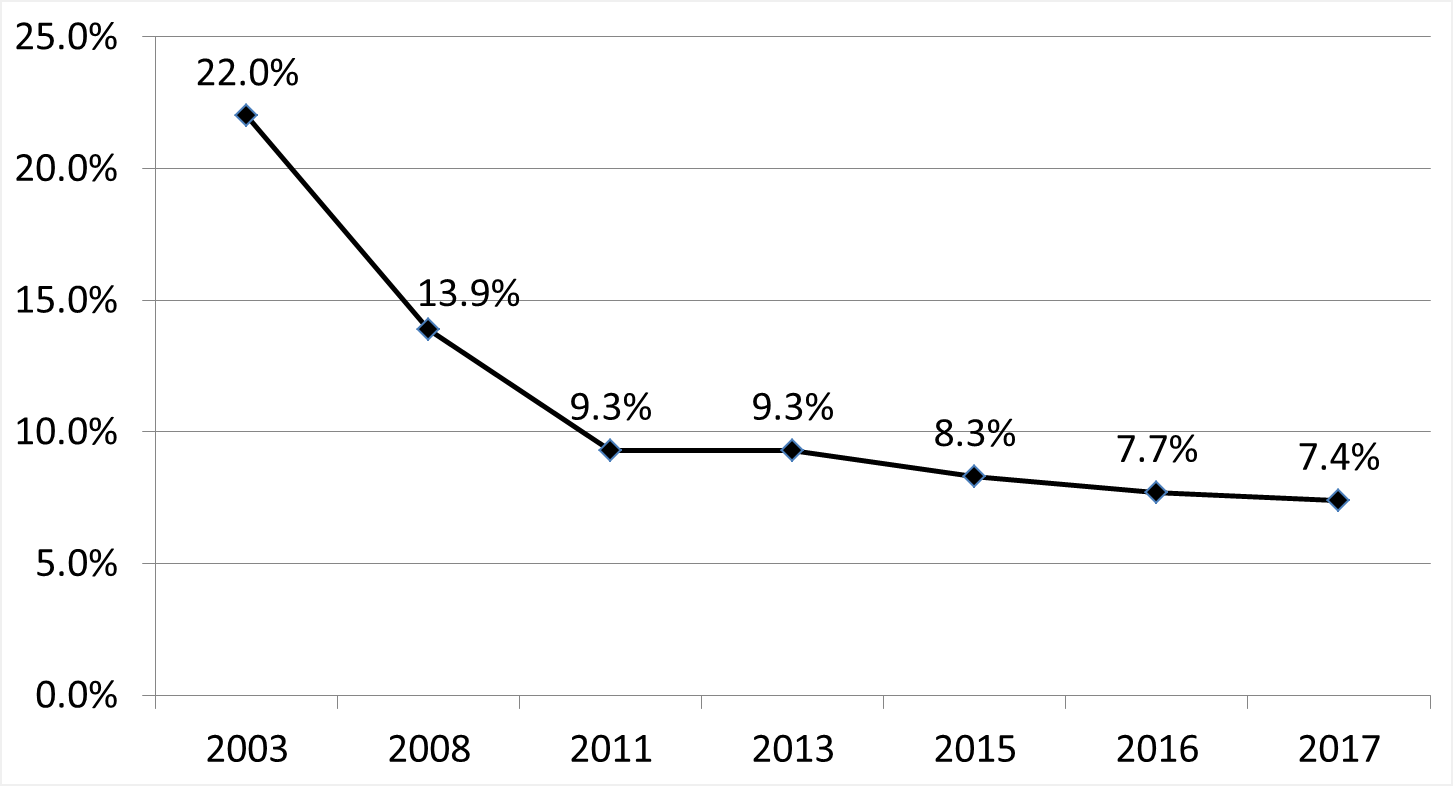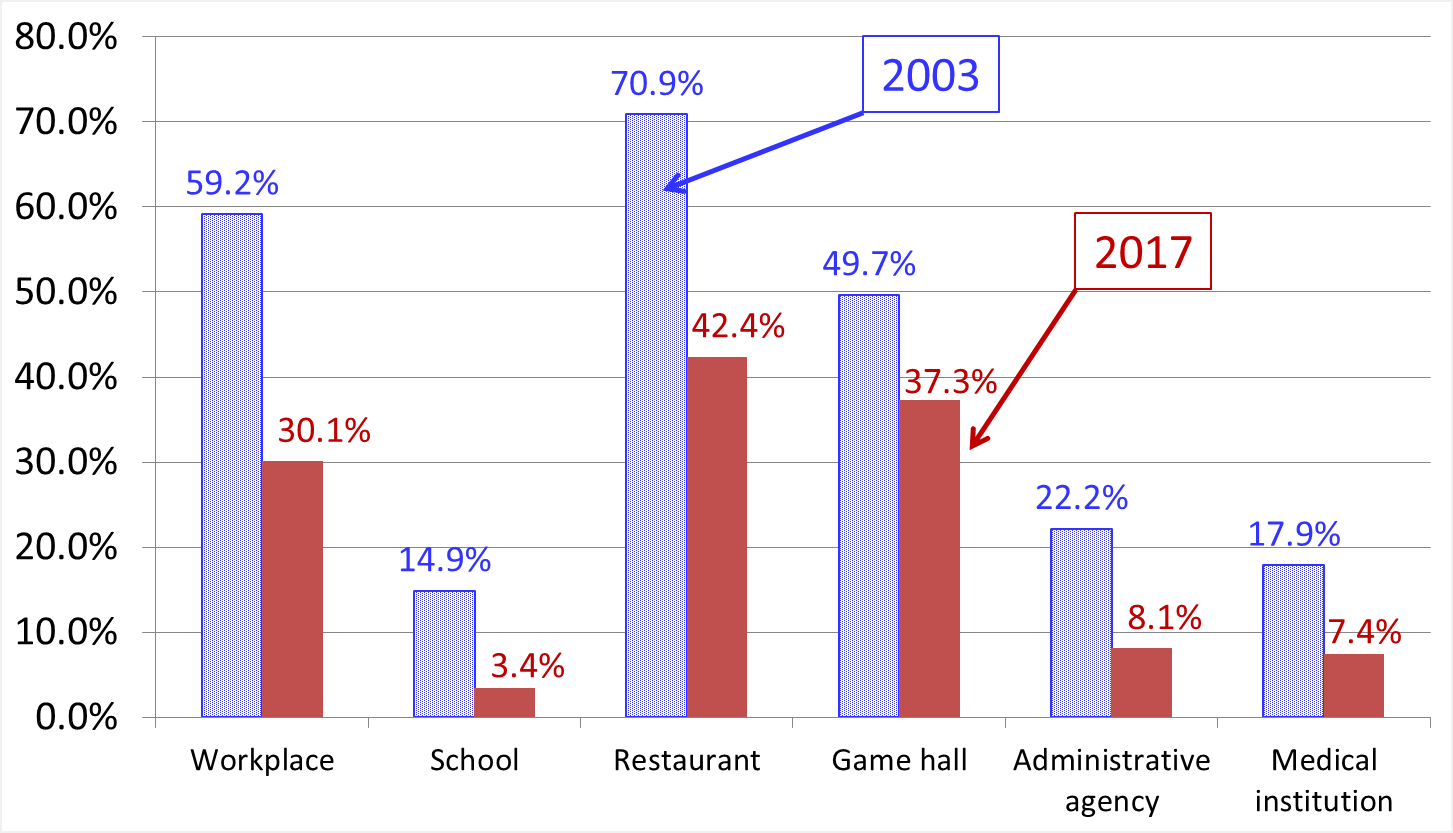Column Finance and the Social Security System 2019.02.27
【Aging, safety net and fiscal crisis in Japan】No.165: Passive smoking
In Column No. 28, I pointed out that although Japan's smoking rate decreased from 24.2% in 2006 to 19.6% in 2016, it is still higher than the 15.1% of the United States (as of 2015) and the 15.8% of the United Kingdom (as of 2016). It is well known that the negative impact of smoking on health extends not only to smokers, but to non-smokers around them as well.
Figure 1 shows the percentages of those exposed to passive smoking daily at home. The steady and visible decline--from 22.0% in 2003 to 7.4% in 2017-- is due to the decline in smoking rate. Figure 2 presents a comparison of the percentages of those who experience passive smoking at least once a month at places other than homes between 2003 and 2017. The fact that it has declined sharply in most public places can be attributed to Japan's public smoking restriction policy. The government aims to lower the percentage in homes, restaurants, administrative agencies, and medical institutions to 3%, 15%, 0%, and 0% respectively.
Figure 1: Percentages of those exposed to passive smoking daily at home

Source: Ministry of Health, Labour and Welfare
Figure 2: Percentages of those suffering from passive smoking at least once a month according to place

Source: Ministry of Health, Labour and Welfare
